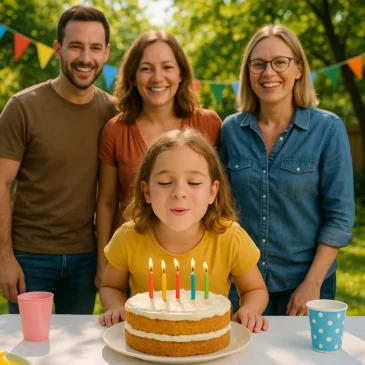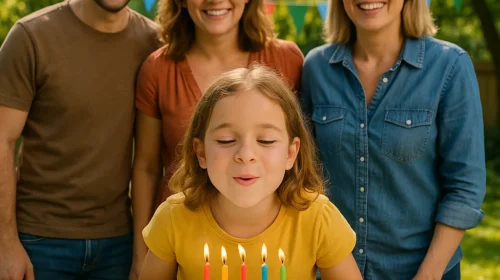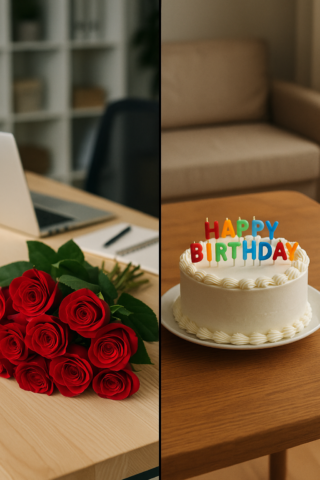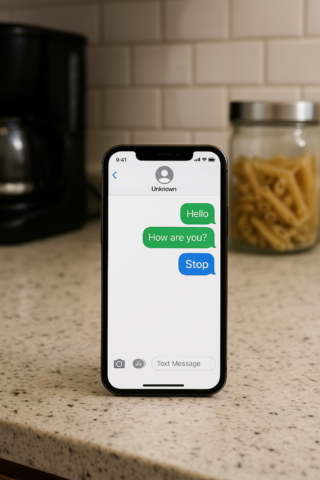If you had told me three years ago that I’d be laughing with my ex-husband and his new wife at our daughter’s birthday party, I would’ve laughed in your face—or possibly cried.
Our divorce was messy. Painful. Full of resentment and quiet heartbreak.
But somehow, we made it through.
And this year, we threw our first truly blended birthday party for our daughter, Mia.
No drama. No awkward tension.
Just laughter, cake, and a little girl who felt completely loved.
Here’s how we went from barely speaking to hosting a joint celebration that worked better than any of us imagined.
Step 1: We Put the Kids First—And Meant It
It sounds cliché, but it’s true: every decision we made was about Mia.
When she turned eight, she said, “I don’t want two birthdays anymore. I want one party with everyone there.”
That hit hard.
It wasn’t about logistics. It was about her heart.
She didn’t want to split her joy between two homes, two cakes, and two sets of photos.
So we agreed to try. Not for us—but for her.
Step 2: We Made a Party Pact
Before we picked a date or ordered a balloon, we sat down—just the three adults: me, my ex-husband Mark, and his new wife, Jenna.
We set clear boundaries:
No discussing past issues at the party.
No surprise guests (yes, that includes that aunt).
If tension came up, we’d step outside—not make a scene.
We also agreed that Mia’s joy came first.
If anyone made her uncomfortable, it would be considered a deal-breaker for future parties.
Step 3: Everyone Had a Role
We each had a job.
Mark handled food and drinks.
Jenna managed games and goodie bags (she’s a Pinterest queen).
I took care of decorations, music, and—of course—the cake.
This wasn’t about control.
It was about sharing the day—and making sure no one felt sidelined.
And you know what? Working as a team made the day smoother, not harder.
Step 4: We Planned for Emotions
Blended families aren’t perfect.
There were weird moments. Like when one of Mia’s friends asked if Jenna was her mom.
Or when my own mother glared across the yard with a passive-aggressive smile.
But we prepared for those. We talked to Mia beforehand and reminded her that it was okay to feel everything.
And when I needed a minute alone? Jenna handed me a soda and said, “Take a breath. I’ve got the piñata.”
It wasn’t fake.
It was grace.
Step 5: We Celebrated the Small Wins

The best part wasn’t the decorations or the presents.
It was the moment Mia looked around, beaming, and said:
“I love that everyone I love is here at the same time.”
That was the win.
We didn’t erase the pain of the past.
We just didn’t let it write this chapter.
What Worked (and What Didn’t)
✅ Clear communication
✅ Shared responsibility
✅ Respect for roles and boundaries
✅ Focusing on the child—not egos
❌ Trying to pretend everything is perfect
❌ Avoiding conversations beforehand
❌ Letting extended family stir the pot
This wasn’t about pretending we were one big happy sitcom family.
It was about being grown-ups.
And giving Mia a memory that made her feel whole—not divided.
Where We Are Now
We’re not best friends.
We don’t do brunch together.
But we show up—for her.
And sometimes, that looks like high-fiving over party games and taking one awkward group photo for the memory books.
What I’ve Learned
Your family doesn’t have to look traditional to feel like love.
Kids don’t need perfection—they need presence.
Forgiveness doesn’t mean forgetting—it means releasing the weight.
Especially when it’s your child’s birthday.
When adults act like adults, kids get to be kids.
That’s the real gift.
Final Thought
From broken marriage to blended family, our journey hasn’t been easy—but this birthday bash showed me what’s possible when you lead with grace, humility, and a whole lot of love.
Mia won’t remember who brought the balloons.
She’ll remember who showed up smiling—and stayed.



